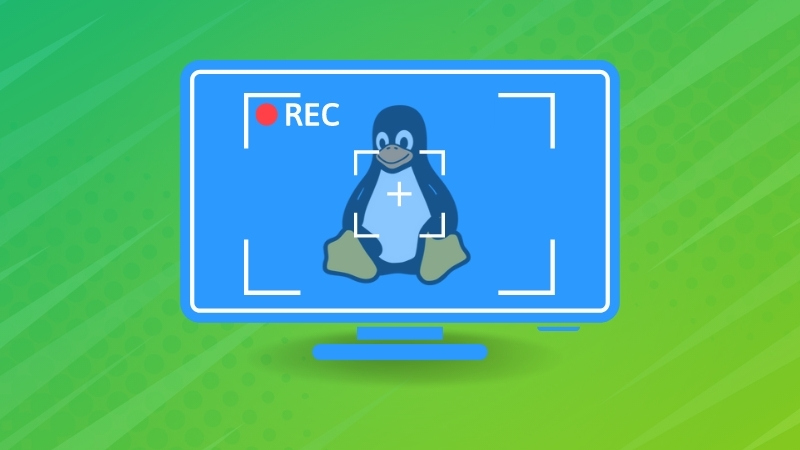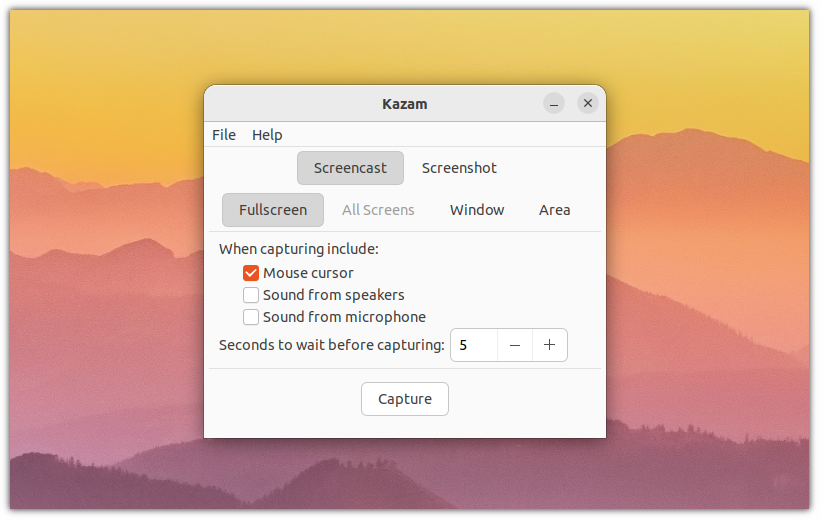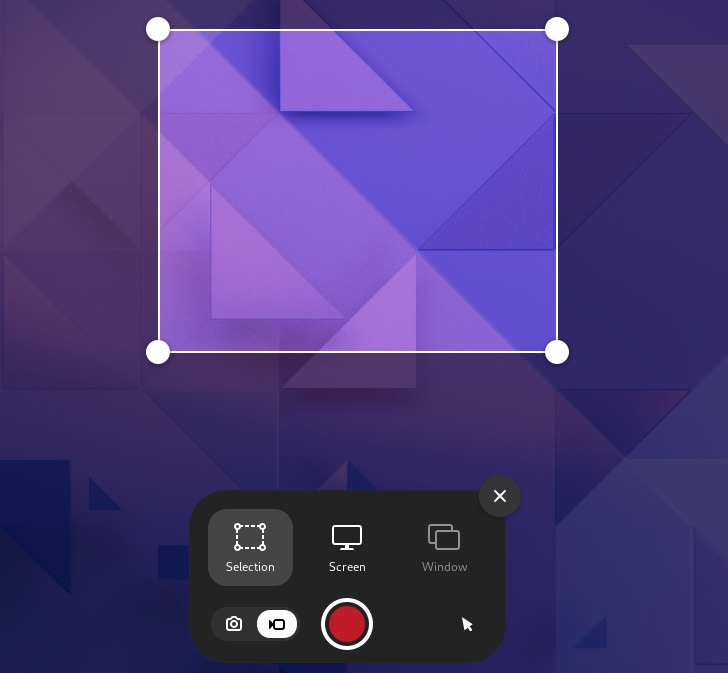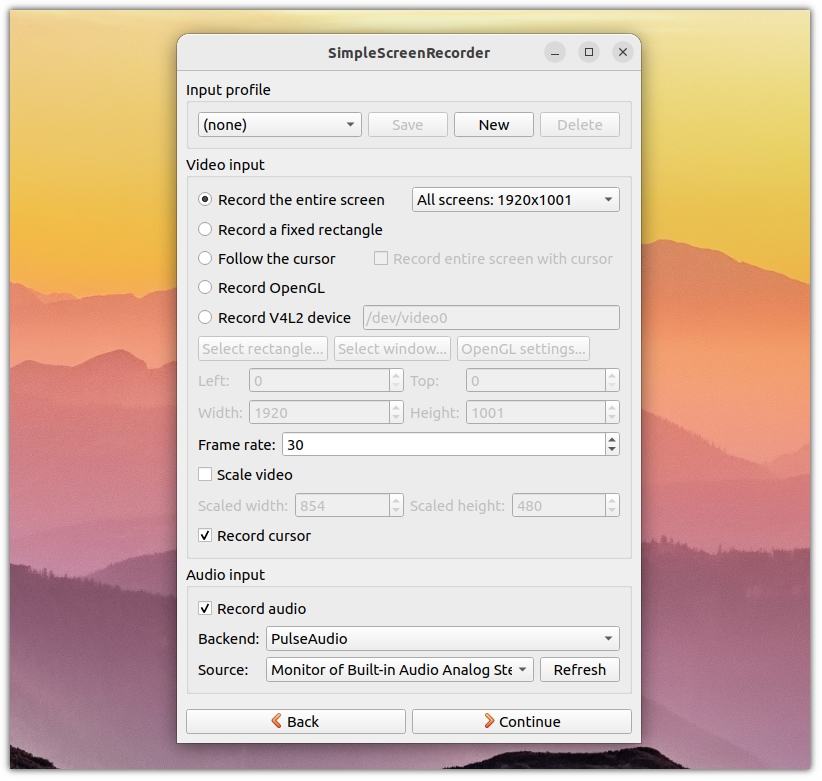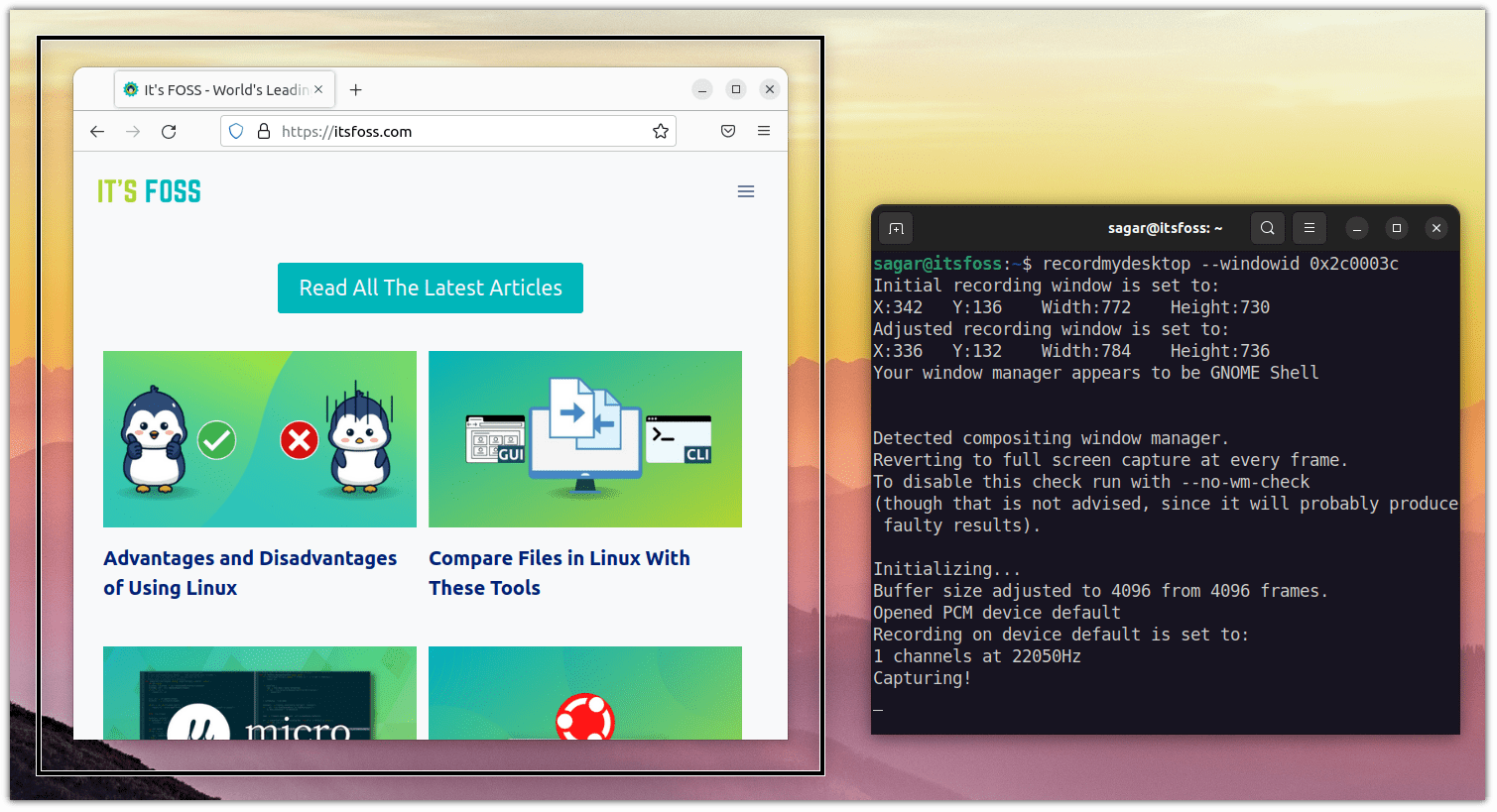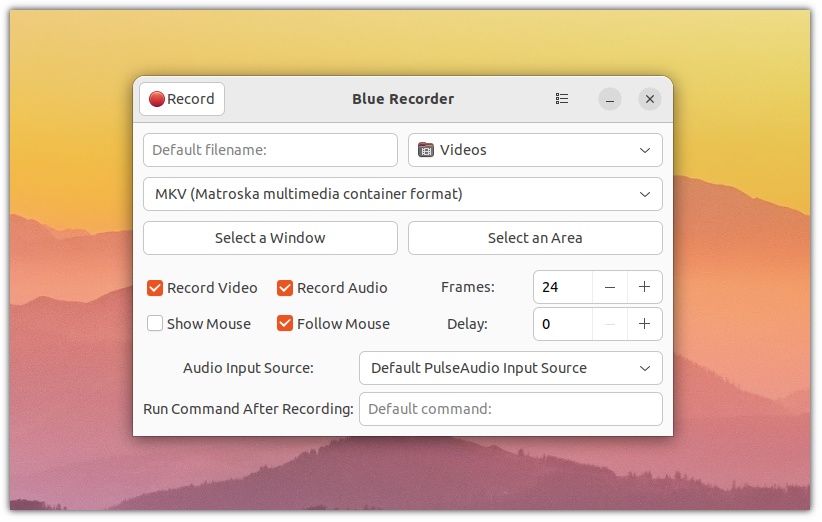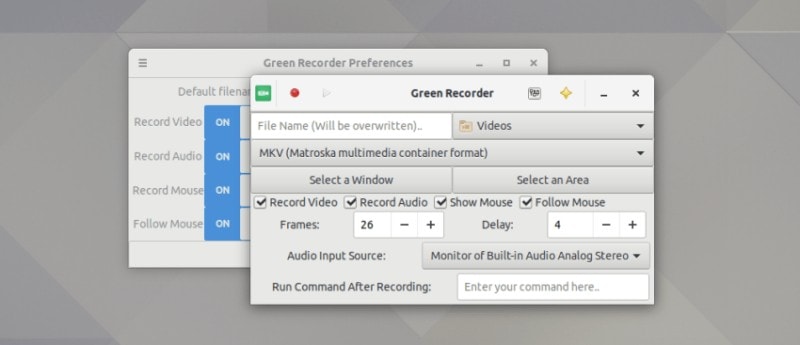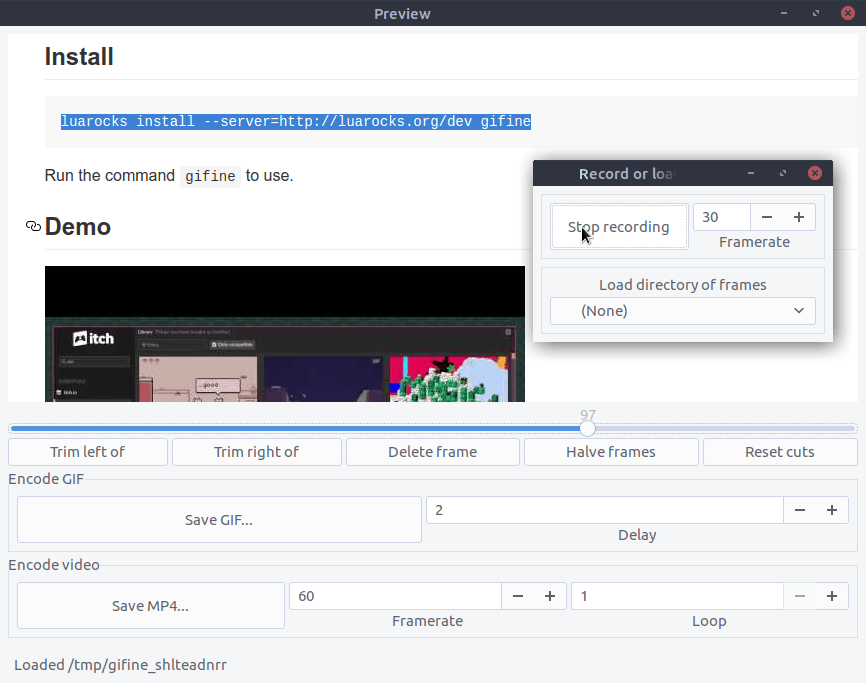Brief: In this article, we’ll list the best screen recorders for Linux. This list also includes software that lets you record your Linux desktop as a
Often we need to record our desktop screen for various purposes, like broadcasting gaming sessions online, making video tutorials, etc. Today, we’re going to present some screen recording applications for Linux.
In this list, you will find options to
- Record screen as a video
- Recording screen as a gif as well
All the software mentioned here is free and open-source (FOSS). You could actually call it a list of free screen recorders, in fact.
Before we see the list of the best screen recorders, I would like to mention asciinema. It’s a desktop tool that lets you record your terminal session and upload it to its website. You can grab the URL and send it to friends. The best thing is that the commands in the recorded terminal session can be copied. That will help a lot if you used a lot of commands – there’s no need to enter them manually.
So, if you just wanted to record your terminal screen, asciinema should do a fine job.
Note: The list below is in no particular order of ranking. I’ve mostly mentioned installation instructions for Ubuntu but this doesn’t make it a list of Ubuntu screen recorders – most of the applications mentioned are available in the official repositories of other distributions.
1. Kazam
Kazam is a minimal and nifty tool for screencasting. It includes screenshot support too. Kazam is suitable for beginners and for getting the task done quickly without getting too caught up in different options.
Main Features
Simple and compact user interface.- Supports multiple video output formats.
- Audio recording from
a suitable source (microphone or speaker). - Support for recording a single window or selected screen area.
- Delay timer support.
Pros
- Simple and minimal, easy to use
Cons
- Does not support Wayland.
- Very few options for tweaking configuration settings
- Lack of webcam recording support
Installation on Ubuntu
Open a terminal window and enter the following command:
sudo apt install kazamN.B. The latest version – which adds a bunch more features to Kazam – may not be available through the official PPA or Ubuntu Universal repositories. But you can install and use it quite easily. Read this article on how to use the latest version of Kazam.
2. GNOME’s Screen Recorder
Starting with GNOME 42, the built-in screenshot tool now includes the feature to record your screen.
So, if you are using a Linux distribution with GNOME 42, you can enable the screen recording with a toggle without needing to install a third-party tool.
You can only select an area or a screen to record without any configuration options for sound/cursor/framerate, etc. The recording may be limited to a specific duration on Ubuntu. I did not have a limit with Fedora Linux 36 on GNOME 42.4.
You can follow our GNOME screen recorder guide to remove/change the limit if that is the case.
If you have always wanted a no-nonsense screen recorder, you can use this.
3. Kooha
Kooha is one of the first screen recording software that added support for Wayland. It is an easy-to-use tool with almost zero setup hassle. You can start recording the screen in a few clicks.
Main Features:
- Minimal and user-friendly UI.
- Hardware acceleration.
- Keyboard shortcuts for better productivity.
- Support for WebM, MP4, GIF, and MKV formats.
Pros:
- Wayland support.
- Hardware acceleration.
- Option to delay your recording.
Cons:
- You might encounter issues such as a green screen in recorded videos (that was the case for me).
- No webcam support.
Installation:
Kooha is only available as a Flatpak. You can follow our detailed guide on using Flatpak. Once your system is configured, you can use the given command to install Kooha:
flatpak install flathub io.github.seadve.Kooha4. Open Broadcaster Software Studio (OBS Studio)

OBS Studio is, without a doubt, the most feature-rich and advanced screencasting cross-platform application available. And, it runs well on Linux as well.
Main Features
- Multiple scenes to switch between seamlessly via custom transitions.
- Filters for video sources.
- Audio mixer with filters.
- Powerful and easy-to-use configuration options.
- Streamlined settings panel for tweaking configurations.
- Live streaming support.
Pros
- Flexible for various use cases.
- Wayland is also supported.
- Webcam support.
Cons
- You’ll need a while to figure out its terminology (… but it’s worth it)
Installation on Ubuntu
OBS Studio is available for Ubuntu via its PPA. You can enter the following commands in the terminal to install it:
sudo add-apt-repository ppa:obsproject/obs-studio
sudo apt update
sudo apt install obs-studioYou can also utilize the snap store or the Flatpak package to get the latest OBS studio version.
5. SimpleScreenRecorder
SimpleScreenRecorder – as the name implies – is a simple application for screen recording on Linux. You get all the essential options to change the framerate, choose your desired format, mute/enable audio, and more.
This can be the perfect option for those who love to tweak with defaults but are overwhelmed with OBS Studio.
You can read this tutorial to find out how to use SimpleScreenRecorder on Ubuntu.
Main Features
- Supports multiple video output formats
- Audio recording from a suitable source
- Support for recording selected screen area
- Provides statistics while recording
- Live preview while recording
- Optimized to work smoothly on slow machines
- Hotkey support
Pros
- Sufficient tweaking options to fine-tune the output video
Cons
- Wayland is not supported.
- The user interface is not very appealing
- No built-in support for webcam recording
Installation on Ubuntu
SimpleScreenRecorder is available for Ubuntu. Run the following commands in a terminal:
sudo apt install simplescreenrecorder6. recordMyDesktop
“A paradise for terminal geeks”, that was my initial impression when I used recordMyDesktop for the first time.
In the past, it used to have a GTK front-end, but it is no longer maintained. But after having a resource-friendly experience with minimal dependencies, it can be a good choice for terminal-focused users.
Main Features
- Only uses open formats for files.
- Ability to record audio over ALSA, OSS, or the JACK audio server.
- Essential options to suit any range of users.
Pros
- Light on system resources.
- Easy to navigate commands.
- Can be used through the terminal.
Cons
- No support for Wayland.
- The “Capture window” only adjusts the recording area to the window size and is often overlapped by other windows.
- No GUI front-end for GTK4.
Installation on Ubuntu
recordMyDesktop is available for installation from the official Ubuntu repository.
Just run the following command to get it installed.
sudo apt install recordmydesktop7. VokoscreenNG
With a modern Qt-based user interface and a set of essential features, it is a nice option.
The tool also includes experimental Wayland support. So, you can test it out if you’re curious.
Main Features:
- Record the entire desktop.
- Record a portion of the screen.
- Add a delay timer for recording.
- Set a time limit for the recording.
- Ability to record through the webcam.
- Tweak the output format, control the framerates, and other necessary parameters.
Pros
- Offers plenty of useful features.
- Easy to use with advanced features on board.
Cons
- Wayland is still in the experimental phase and lacks some of its main features given with X11.
Installation on Ubuntu
You can easily install it from the official repositories. Just use the following command in the terminal
sudo apt install vokoscreen-ng8. Blue Recorder
The Blue Recorder is based on the discontinued Green recorder app and has out-of-the-box support for Wayland on GNOME.
As you can notice in the screenshot above, it is quite straightforward to use.
Main Features
- Support for MKV, AVI, mp4, wmv, GIF and nut formats.
- Recording can be stopped through the system tray.
- The audio interface can easily be changed.
- Available on both Snaps and Flatpak.
Pros
- Minimal UI.
- Support for Wayland.
Cons
- While selecting the window or making a selection to record the screen may get you crash or glitches.
Installation on Ubuntu
As I mentioned earlier, Blue Recorder is available in snaps and that makes our installation process straightforward. Just a single command and that’s it:
sudo snap install blue-recorderHonorable Mentions
Your choice?
Did I miss listing your favorite Linux screen recorder application? Which desktop recorder do you use on Linux?
Do share your suggestions and thoughts in the comments below.

